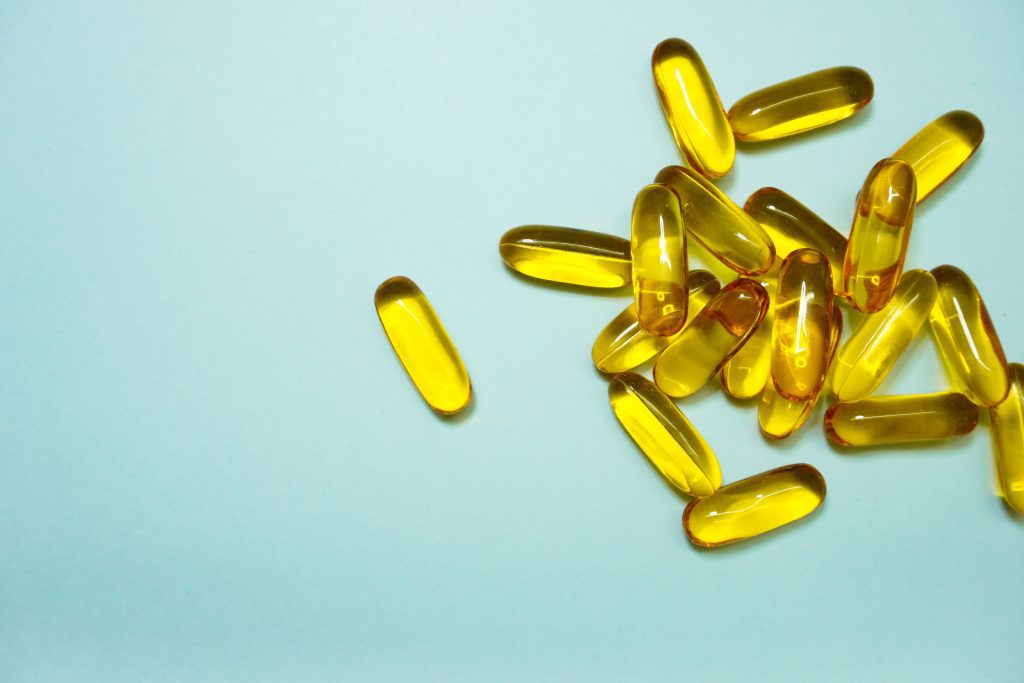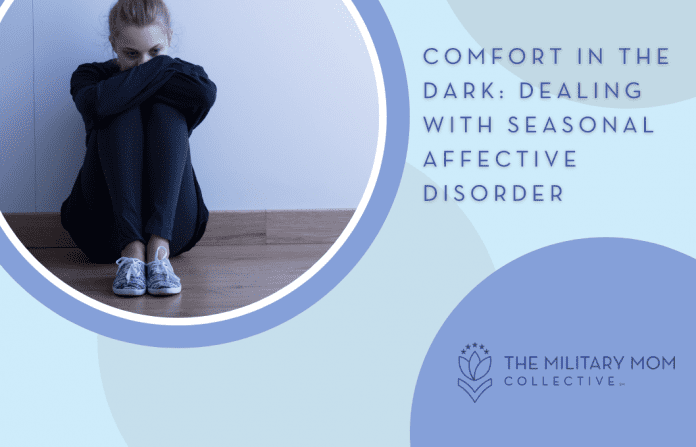Seasonal Affective Disorder (SAD) catches me by surprise every year. It shouldn’t. Feeling down in the darker months is as much a part of the rhythm of seasons as the leaves changing in the fall and the first daffodil shoots in the spring.
But for some reason, as the kids start school and the long, summer evenings start to darken into night sooner and sooner, I have to relearn that more darkness in my day leads to more darkness in my mind, too.
It sucks to have a cycle of depression that just keeps coming back like clockwork each year, but one benefit of the cyclical nature of SAD is that you can prepare yourself for the days ahead. Even if you have selective amnesia about the whole thing like me, once depression starts showing its sneaky face again, you can pull out a trusty arsenal of strategies to keep it subdued, if not totally vanquished.
 Wait. What, exactly, is SAD?
Wait. What, exactly, is SAD?
Seasonal Affective Disorder is when feelings of depression start with the change of seasons. People most commonly experience it during the winter months, but it’s also possible to have SAD in spring or summer.
People with SAD feel depressed for much of the day, almost every day. They may lose interest in things they used to love or have involuntary changes in their appetite or sleep patterns. Often, their energy decreases and they may feel hopeless about life. In severe cases, people with SAD may experience thoughts of death and suicide.
Who is likely to get SAD?
Anyone can be affected by SAD, but you may be especially vulnerable if you have experienced depression in the past. SAD commonly affects people who have other mental health struggles, such as depression, bipolar disorder, ADHD, anxiety, and other conditions.
It can also sneak up on you when other parts of your life are thrown off kilter – something that, as military spouses, we experience regularly. Be on the lookout if you are spending your first winter in a new location, as being further north or the simple stresses of making a home somewhere else can increase your susceptibility to SAD. Lack of support can also increase depressive symptoms, whether that be living far from extended family members, dealing with a deployment, or going through the process of making new friends.
Okay, so am I doomed? What can I do about it?
Light therapy is probably the most stereotypical treatment for SAD: spending time with a “light box” that is believed to increase energy and positive feelings. Light boxes can be purchased without a prescription, but it’s a good idea to chat with your doctor and see if they have any suggestions.
Another option is to spend time outside. It can be difficult to work up the motivation to go outside when you feel depressed, especially when it’s cold and there is less daylight time to work with. But even if it’s simply bundling up and standing at the end of your driveway for a few minutes, exposure to sunlight and being outside can bring a little mood boost.
Getting your body moving can lift your mood. Again, it can be hard to find motivation to do this when you are feeling low, but try one of these to boost those endorphins:
- go on a quick walk outside (you receive the added benefit of some sunshine)
- turn on a workout video. My favorite mood boosters are dance workouts, and I love the Fitness Marshall and Shine Dance Fitness.
- get yourself to the gym
 Bring a little hygge to your surroundings. Hygge, a Danish tradition of coziness during the dark winter months, has been a buzzword over the last few years for a reason. The word can loosely be translated as “to console” and comes from the same ancient word that our English word “hug” derives from. Practicing hygge involves lighting candles, snuggling in cozy blankets, eating warm comfort foods, and being cozy with your loved ones. While hygge can’t solve every problem, it can be a comfort when you’re experiencing SAD.
Bring a little hygge to your surroundings. Hygge, a Danish tradition of coziness during the dark winter months, has been a buzzword over the last few years for a reason. The word can loosely be translated as “to console” and comes from the same ancient word that our English word “hug” derives from. Practicing hygge involves lighting candles, snuggling in cozy blankets, eating warm comfort foods, and being cozy with your loved ones. While hygge can’t solve every problem, it can be a comfort when you’re experiencing SAD.
Taking your vitamins can help your mental health – your vitamin D, that is! Vitamin D is the only vitamin that we absorb through our skin through sunlight, and most people are deficient, especially during dark winter months. Different studies have shown that vitamin D deficiency is a factor in depression, and it’s hard to make up for it by eating a healthy diet (although eating food that fuels you well can certainly also help your well-being!). Talking to your doctor and finding a vitamin D supplement can give you an advantage in the fight against depression.

Talking about how you’re feeling in therapy can also help you get through SAD. While talking about your feelings isn’t a magic cure that will erase all of your problems, having someone listen to your struggles and talk you through them can really be helpful. Therapists can also help you find coping strategies and tools to work around difficult emotions and circumstances.
And finally, don’t underestimate the power of antidepressants. Taking an antidepressant is a big decision and one you’ll want to discuss with your doctor. But if you are struggling to function each day or thinking of harming yourself, medication can help you feel like yourself again and give you the leg up you need to shake off the ball and chain of SAD.
If you are struggling this time of year, know that you are not alone.
The winter months are difficult for many, and the last couple of years have brought additional turmoil and stress through natural disasters, political tension, and of course, the pandemic. But there are ways to feel better! Hang on to hope, speak to your support system and health care providers, and know that spring’s light is just around the corner.
If you are experiencing these things right now, please reach out for help!
You can call the National Suicide Prevention Lifeline toll-free at 1-800-273-TALK (8255). You also can text the Crisis Text Line (HELLO to 741741) or use the Lifeline Chat on the National Suicide Prevention Lifeline website.











